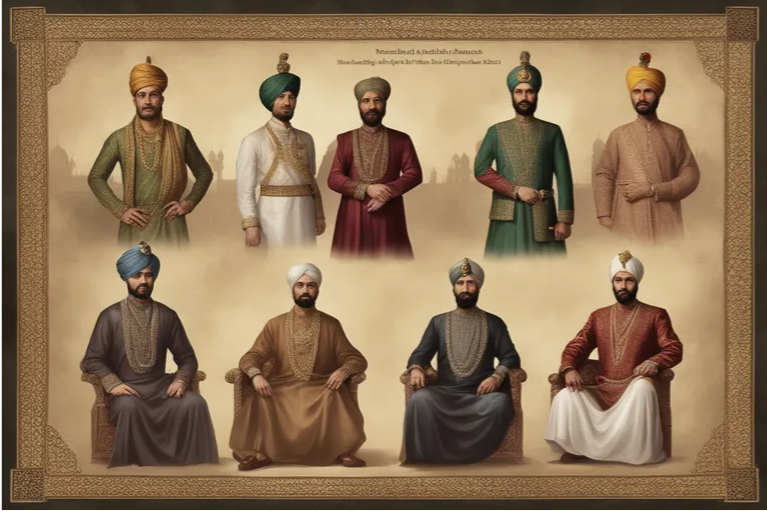The Delhi Sultanate: Rise and Fall
- historyofhindustan
- December 16, 2023
- Blog
- 0 Comments

The Delhi Sultanate was a medieval Muslim kingdom that ruled over parts of the Indian subcontinent from the 13th to the 16th century. Its history involves a series of dynasties and rulers, marked by periods of conquest, cultural exchange, and internal strife. Here’s a detailed explanation of the rise and fall of the Delhi Sultanate:
The Delhi Sultanate was a medieval Muslim kingdom that ruled over parts of the Indian subcontinent from the 13th to the 16th century. Its history involves a series of dynasties and rulers, marked by periods of conquest, cultural exchange, and internal strife. Here’s a detailed explanation of the rise and fall of the Delhi Sultanate:
1. Rise of the Delhi Sultanate (1206-1290):
- Qutb-ud-din Aibak (1206-1210): The Delhi Sultanate was founded by Qutb-ud-din Aibak, a slave of Muhammad Ghori. After Ghori’s death, Aibak established the Slave Dynasty and became the first Sultan of Delhi.
- Iltutmish (1211-1236): Iltutmish, the successor of Aibak, strengthened the administrative and military structures of the Sultanate. He faced challenges from both external invaders and internal rebellions but managed to consolidate and expand the kingdom.
- Razia Sultan (1236-1240): Razia Sultan, daughter of Iltutmish, became the first and only woman to rule the Delhi Sultanate. Her reign faced opposition due to gender biases, leading to her eventual overthrow.
- Balban (1266-1287): Ghiyas-ud-din Balban came to power after a period of instability. He adopted a strict and authoritarian rule, implementing measures to curb corruption and maintain law and order.
2. The Khalji Dynasty (1290-1320):
- Alauddin Khalji (1296-1316): Alauddin Khalji, a powerful and ambitious ruler, ascended the throne after assassinating his uncle Jalal-ud-din. He implemented economic reforms, introduced market control measures, and successfully repelled the Mongol invasions.
- Military Achievements: Alauddin Khalji expanded the Delhi Sultanate to the Deccan and South India through military campaigns. His general Malik Kafur raided the southern kingdoms, bringing immense wealth back to Delhi.
- Administrative Reforms: Alauddin established a strong administrative system, known for its efficiency and centralized control. He reorganized the army, introduced a price control system, and conducted a thorough revenue assessment.
3. The Tughlaq Dynasty (1320-1414):
- Muhammad bin Tughlaq (1325-1351): Muhammad bin Tughlaq, known for his intellectual pursuits, faced challenges during his rule. His decision to shift the capital from Delhi to Daulatabad was a major failure and led to economic and administrative difficulties.
- Administrative Challenges: Muhammad bin Tughlaq’s ambitious projects, including the introduction of token currency and experiments with agricultural policies, faced widespread criticism and rebellion.
4. The Sayyid and Lodi Dynasties (1414-1526):
- Sayyid Dynasty (1414-1451): The Sayyid rulers took over after the decline of the Tughlaq Dynasty. However, they faced challenges from regional powers and were not able to restore stability.
- Lodi Dynasty (1451-1526): The last ruling dynasty of the Delhi Sultanate, the Lodis, faced internal strife and external invasions. The most notable invasion was by Babur, the founder of the Mughal Empire, who defeated Ibrahim Lodi in the Battle of Panipat in 1526.
5. The Fall of the Delhi Sultanate (1526):
- Battle of Panipat (1526): Babur’s victory marked the end of the Delhi Sultanate and the beginning of the Mughal Empire in India. The battle had far-reaching consequences for the political landscape of the subcontinent.
The rise and fall of the Delhi Sultanate encapsulate a dynamic period in Indian history, marked by political, cultural, and administrative changes, as well as interactions between different communities and regions.



